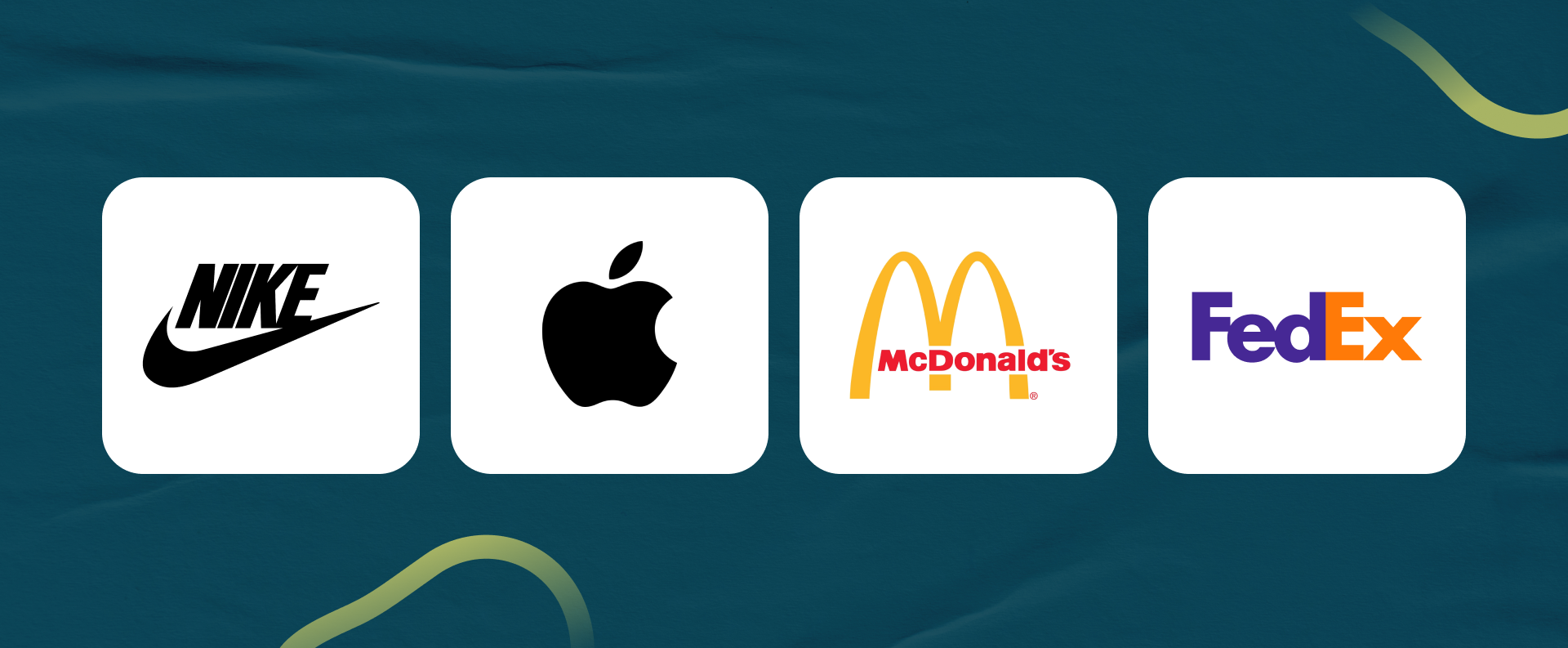In today’s bustling marketplace, a logo is far more than just a pretty picture; it serves as the very “face” of a business, often representing the initial interaction a potential customer has with a company. For entrepreneurs, understanding the power of good business logos is paramount, as they are crucial identifiers that help a brand stand out, communicate its core messages, and evoke specific emotions. A professionally designed logo is indispensable from the outset, establishing credibility and projecting authority within an industry.
While a logo is a central visual component, its true impact is amplified by a consistent brand experience, clearly articulated values, and unified communication. A visually appealing logo cannot compensate for a weak or inconsistent brand identity; thus, entrepreneurs must prioritize defining their brand’s purpose, values, personality, and target audience before or in parallel with the logo design process.
The Core Principles of Good Business Logos
Successful logos, the kind that become iconic and globally recognized, adhere to a set of fundamental principles that ensure their effectiveness and longevity:
- Simplicity: At its heart, a good business logo is simple. This clarity allows for instant recognition and makes it highly memorable, avoiding visual clutter that can confuse the audience. Simple designs are also incredibly versatile, easily reproducible across various sizes and platforms, from a tiny app icon to a large billboard. Think of the universally recognized logos of McDonald’s, Apple, or Nike – their minimalist iconography speaks volumes. As graphic design legend Paul Rand noted, a logo should contain “only what’s needed” and, crucially, “only one idea” to avoid overcomplication and enhance memorability.
- Memorability: Directly linked to simplicity, a good business logo must be easy to recall. Its unique and clean design ensures that the public remembers and associates it with the brand even after a single exposure.
- Timelessness: An effective logo transcends fleeting design trends, maintaining its relevance and impact for years, even decades. This enduring quality builds long-term trust and credibility for the brand.
- Versatility: A truly good business logo performs flawlessly across a wide array of sizes, colors, formats, and applications. It must retain its visual impact and legibility whether on a large sign, a business card, or a small digital favicon, often requiring different variations for specific contexts.
- Relevance and Appropriateness: The logo must be fitting for the brand it represents, its industry, products, services, and target audience. It should accurately encapsulate the brand’s values and personality, genuinely resonating with its intended audience.
- Distinction and Originality: To stand out in a crowded market, a logo must be unique and clearly differentiated from competitors, preventing confusion and brand dilution. Its design should be instantly recognizable within its competitive landscape.
- Legibility: Regardless of size or context, the logo must be easy to read and understand. This involves careful font selection and design elements that remain clear when scaled.

The Visual Language of Good Business Logos
Beyond these conceptual principles, the tangible visual elements are what bring a logo to life:
- Color: A powerful tool, color profoundly impacts human psychology and emotions. Strategically chosen colors communicate a brand’s personality and essence, leaving a lasting impression. Warm colors like red evoke energy, while cool colors like blue suggest trust. Limiting the palette to a maximum of three colors helps maintain clarity.
- Typography: The chosen font directly influences how an audience perceives the brand. Serif fonts might convey tradition, while sans-serifs suggest modernity. Legibility and alignment with the brand’s voice are crucial, with consistency across all communication platforms.
- Shapes and Symbols: These components create significant visual impact and convey specific messages. Geometric shapes like circles (unity) or triangles (stability) carry subconscious associations. Logos often use symbolic representations to communicate core principles concisely.
- Negative Space: The purposeful use of the space surrounding and separating logo components is vital for aesthetic integration, visual balance, and optimal legibility. Clever use of negative space can even add hidden meanings, like the arrow in the FedEx logo.
The Strategic Process of Creating Good Business Logos
Crafting good business logos is not a spontaneous act but a structured, strategic process rooted in a deep understanding of the brand:
- Defining Brand Identity: Before any design begins, the brand’s complete identity must be clearly defined. This includes its purpose, mission, vision, and values, which serve as guiding pillars. A thorough understanding of the target audience and how the brand differentiates from competitors is also essential to ensure the logo resonates authentically and avoids misdirected efforts.
- Research and Analysis: This involves in-depth market, audience, and competitor research to inform design decisions with solid data, rather than assumptions.
- Conceptualization and Sketching: This exploratory phase involves brainstorming and sketching various ideas to find unique concepts that encapsulate the brand’s essence.
- Unique Visual Identity Design: This step involves developing the logo itself, selecting distinctive colors, and choosing typography that best represents the brand’s personality. Visual consistency is paramount for brand recognition across all platforms, including custom icons and favicons for digital presence.
- Consistent Communication: The logo and brand messages must be uniformly presented across all customer touchpoints—social media, advertising, website, and customer service—to avoid confusion and strengthen brand perception.
- Continuous Adaptation and Evolution: Brands must be willing to evolve and adapt to market changes to maintain relevance. This evolution should be gradual, reflecting natural growth rather than abrupt shifts.
Learning from Success: Iconic Good Business Logos
Examining iconic logos provides invaluable lessons on what makes good business logos truly effective:
- Nike’s “Swoosh”: A prime example of effective design, its deep symbolism (mimicking the Greek goddess of victory’s wings, resembling a checkmark for “Just do it”) and fluid silhouette evoke movement and success. Its minimalism, memorability, versatility, and timelessness have made it globally recognized and enduring for decades.
- Apple’s Bitten Apple: This logo’s simplicity, balance, and consistent use have cemented its iconic status. The bite adds clarity, distinguishing it from other fruits, and subtly reflects Apple’s core design philosophy of simplicity.
- McDonald’s Golden Arches: Simple and memorable, these arches are instantly recognizable worldwide. Their original architectural relevance and modern combination with a sans-serif typeface maintain their charm while embracing modernization.
- FedEx’s Hidden Arrow: This logo cleverly uses negative space to embed a subtle arrow between the “E” and “x,” symbolizing speed, precision, and forward movement—key attributes for a logistics company. This dual meaning adds depth and sophistication.
These examples highlight that good business logos often carry a story or meaning beyond aesthetics, are typically conceived by professional designers, and require consistent application across all brand touchpoints to build recognition and trust. The true value of a logo lies not in its initial cost, but in its long-term strategic effectiveness in terms of recognition, trust, and brand equity.
Common Pitfalls: What Makes a Logo Ineffective
Understanding what makes a logo ineffective is as crucial as knowing what makes it successful. Common mistakes can significantly undermine a brand’s perception:
- Lack of Strategy and Audience Knowledge: Designing without a clear brand strategy or understanding the target audience leads to assumptions, wasted resources, and a logo that fails to connect.
- Overly Complex Design: Logos with too many elements, intricate details, or attempts to convey multiple ideas are difficult to identify, remember, and scale, leading to confusion and diluted messaging.
- Inconsistency: Lack of uniformity in brand messages and visual elements, including the logo, confuses customers and damages brand perception over time.
- Ignoring Scalability and Versatility: A logo that loses quality or legibility when resized or used across different media appears unprofessional and limits marketing efforts.
- Ineffective Color and Typography Choices: Selecting colors that don’t convey the desired message or fonts that are illegible or inappropriate can alienate the audience and undermine the logo’s effectiveness.
- Lack of Originality and Copying Competitors: Imitating others or using generic imagery makes a business blend into a saturated market, hindering its ability to stand out and build a unique identity.
- Inappropriate or Ambiguous Design: Logos that are unsuitable for the brand’s context or values, or that contain unintended suggestive imagery, can severely damage reputation and public connection, as seen with the London 2012 Olympics logo, Gap’s 2010 redesign, Tropicana’s 2009 refresh, and Kudawara Pharmacy’s logo. These cases underscore the risk of emotional disconnection and loss of brand equity when changes are made without thorough market research and respect for existing customer perceptions.
Current and Future Trends in Good Business Logos (2025)
The landscape of good business logos is constantly evolving, driven by digitalization, shifting consumer behavior, and the growing importance of social and ethical values:
- Digital Adaptation: Minimalism and flat design remain dominant for mobile-friendliness and quick loading. Responsive and animated logos are gaining traction for dynamic storytelling and adaptability across various digital contexts, including dark mode.
- AI-Powered Design: Artificial intelligence is transforming logo creation by assisting creativity, optimizing processes, and generating innovative ideas, enhancing both aesthetics and efficiency.
- Purpose-Driven Branding: There’s a strong emphasis on sustainability and inclusion. Consumers, particularly Gen Z and Millennials, prioritize brands aligned with their ethical and social values, leading to designs that embrace nature, ethics, accessibility, and diversity.
- Hyper-personalization and Voice Branding: Brands are increasingly leveraging AI for highly personalized experiences and developing distinctive brand voices for voice-enabled platforms, ensuring consistency across all conversational touchpoints.
- Authenticity through UGC: User-Generated Content is valued for fostering authenticity, encouraging customers to share their brand experiences and showcasing this content on company platforms.
- Emerging Aesthetics: Trends include “minimalism with character,” rich textures and gradients, conceptual and abstract designs, experimental typography, and a return to handcrafted elements, blending simplicity with boldness and nostalgia with modernity.
This convergence of technology and ethical values means that future good business logos will not only be visually appealing and technologically agile but also morally resonant and purpose-driven. Entrepreneurs must seek design partners who master cutting-edge digital tools and possess a deep understanding of the evolving sociocultural landscape to translate purpose and ethical commitments into compelling visual language.
Understanding the principles of good business logos is a crucial step for any entrepreneur. However, a logo, no matter how well-designed, is just one component of a larger, cohesive brand identity. As explored in our previous discussion on brand identity design services, a truly impactful brand goes beyond a single visual element, encompassing mission, values, and consistent customer experience. At Creative Pear, we specialize in crafting not just exceptional logos, but comprehensive brand identities that ensure every visual and communicative touchpoint aligns perfectly, building trust and driving long-term success for your business.
The Enduring Impact of Good Business Logos
In essence, a logo is a strategic, indispensable investment that drives recognition, fosters trust, and cultivates customer loyalty. It is the “silent ambassador of your brand,” communicating its essence before a single word is spoken. The success of good business logos lies in their deep connection to the brand’s overall identity—its mission, vision, values, target audience, and personality. A logo does not operate in a vacuum; its impact is magnified when intrinsically linked to a coherent brand strategy and consistently applied across all customer touchpoints.
Therefore, investing in professional design expertise is crucial. Professional design ensures the logo is unique, memorable, versatile, and appropriate, avoiding common pitfalls that can lead to significant costs, not just monetarily, but also in terms of eroding customer trust and brand reputation. Entrepreneurs should approach logo design with a strategic, proactive mindset, investing time and effort in thorough research and clear brand definition, and striving for excellence in design execution. By doing so, they will lay a solid foundation that not only distinguishes their business but also propels its long-term growth and success in the market.


